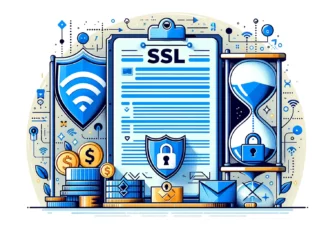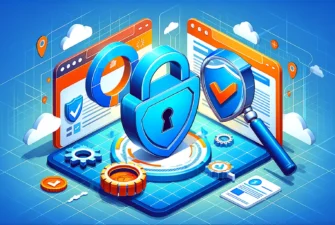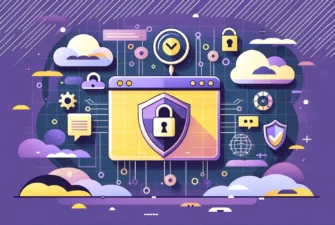
In the world of software, trust is everything. That’s where the Software Publisher Certificate (SPC) comes in – it’s like a stamp of approval that tells users your software is safe and legit.
But how does it work, and how can you get one as a software publisher? Let’s break it down so you can understand how this digital element can benefit you and your users.
Table of Contents
- What Is a Software Publisher Certificate?
- How Software Publisher Certificates Work?
- Software Publisher Certificates Benefits
- How to Get a Software Publisher Certificate?
What Is a Software Publisher Certificate?
A Software Publisher Certificate (SPC), also known as a Code Signing Certificate, is a digital authentication cert developers use to verify the legitimacy and integrity of their software products. It functions by digitally “signing” the software with a unique cryptographic key, acting as a virtual seal of approval that confirms software authenticity.
The SPC prevents cyber thieves from altering digital apps and programs. It guarantees end-users that the software they are downloading or installing is genuine and originates from a trusted source.
How Software Publisher Certificates Work?
Let’s explain how Software Publisher Certificates work step-by-step.
- Key Generation and Storage: As a software publisher, you create a pair of cryptographic keys—a private key and a corresponding public key. Since June 1, 2023, industry standards have required the secure storage of private keys on hardware certified for high-level security, such as hardware security modules (HSMs).
- Signing the Software: Before releasing your software, you use the private key stored on the HSM to create a unique digital signature. This signature confirms that the software comes from you and hasn’t been altered since it was signed.
- Certificate Creation: A Software Publisher Certificate containing your public key and identifying information is included alongside your software.
- Verification by Users: When users install your software, their system automatically checks its SPC.
- Signature Verification: The user’s system uses the public key from the SPC to verify the digital signature. If it matches, it confirms the software is genuine and hasn’t been tampered with.
- Authenticity and Integrity Check: Users can trust that the software is original and secure.
Software Publisher Certificates Benefits
Software Publisher Certificates increase software security, boost user trust, facilitate code integrity, and reduce malware risks, streamlining software distribution. Let’s unpack how these benefits can significantly enhance your operational efficiency and user experience.
- Improving Software Security: Integrating Software Publisher Certificates improves your software’s security and sustains user trust by confirming its authenticity. This digital signature assures users that your software is delivered intact and from a reliable source.
The encryption scrambles the code into random characters, rendering it incomprehensible to potential hackers. Any unauthorized alterations invalidate the certificate, while users receive prompt security notifications. - Boosting User Trust: SPC assures users you’ve taken essential measures to safeguard your software against potential tampering or corruption. As a result, users are more likely to download, install, and consistently use your software, leading to improved user retention and loyalty.
Moreover, if you have an extended validation code signing certificate, this trust factor sets you apart in the competitive software market. Operating systems like Windows label your digital products as safe to use. - Streamlining Software Distribution: Another crucial advantage of Software Publisher Certificates is their ability to simplify your software distribution process, ensuring efficient, secure, and seamless delivery to end users across diverse platforms and devices.
It does so by linking the certificate to the software package, which then authenticates the origin and verifies the integrity of the content. As a result, SPC optimizes the distribution and minimizes risks such as unauthorized modifications. - Facilitating Code Integrity: Software Publisher Certificates use strong hash functions, which create a unique digital fingerprint of the code. Any alterations in the code result in a different hash value, immediately flagging any potential integrity issues.
- Enhancing Compatibility: Software Publisher Certificates enable easy integration with various operating systems and platforms, ensuring compatibility across multiple devices and environments. This compatibility enhances user accessibility and usability, allowing your software to reach a broader audience without encountering issues or errors.
- Elevating Brand Reputation: By obtaining and displaying Software Publisher Certificates, your brand gains credibility and authority in the eyes of both users and industry professionals. The enhanced reputation attracts potential partners, investors, and collaborators who recognize your commitment to quality, security, and compliance standards.
- Simplifying Compliance: SPCs facilitate compliance by providing a verifiable record of software authenticity and origin. This simplification reduces the administrative burden associated with compliance audits, certifications, and regulatory requirements, saving time and resources while adhering to industry standards and best practices.
- Enabling Secure Updates: With SPCs, you can securely distribute software updates and patches to your users. This secure update mechanism protects users from potential security vulnerabilities and guarantees the continuous improvement of your software product.
How to Get a Software Publisher Certificate?
To obtain a Software Publisher Certificate, you’ll need to go through a multi-step process that involves choosing a certificate authority, validating your identity, and selecting the delivery method. At SSL Dragon, we offer the best Software Publisher certificates on the market and walk you through the enlisting process.
The initial step is selecting a trusted provider like Sectigo or DigiCert. Once you’ve chosen an authority, you must validate your identity by providing the necessary documentation to prove your individual or business legitimacy.
Typically, you’d submit articles of incorporation, business licenses, or a Dun and Bradstreet number. The certificate authority checks these documents to ensure they align with your contact information.
Finally, you’ll choose a suitable delivery method and then configure the SPC for your software.
Bottom Line
A Software Publisher Certificate ensures your software’s integrity and boosts users’ trust. With benefits like secure distribution and enhanced reputation, it’s a must-have for any serious developer.
Now that you know how to get a Software Publisher Certificate, it’s just a matter of time before your digital goods become safe and accepted on various platforms.
Save 10% on SSL Certificates when ordering today!
Fast issuance, strong encryption, 99.99% browser trust, dedicated support, and 25-day money-back guarantee. Coupon code: SAVE10



























